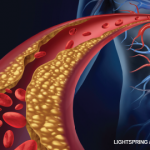The importance of this finding cannot be overstated. In addition to clarifying the mechanism of action of a drug widely used as an analgesic and antiinflammatory agent for almost a hundred years, it pointed the way to treatments for various diseases and opened avenues of research and drug discovery that are still being explored.2
Vane did not rest on his laurels. He subsequently identified the ephemeral substance released from the lungs during anaphylactic shock, previously referred to as rabbit aorta contracting substance, as thromboxane A2 (TxA2). He demonstrated that TxA2 was derived from the same precursors as prostaglandins, but instead of mounting a similar antiinflammatory response, it seemed to have the opposite effect, unleashing a series of powerful platelet-aggregating activities.
A few decades later, rheumatologists learned just how potent these actions could be.
As we were doling out the newest NSAIDs, we focused on our patients’ bellies & bowels. Perhaps we should have looked elsewhere: to their hearts & blood vessels.
Chewing on Bark
The ancient Greeks were well aware of the health benefits of willow bark. Hippocrates touted its benefits as an analgesic during childbirth, and Galen described its antipyretic properties. Over the course of the next millennium, it was used to treat the agues and other shivering maladies. However, by the time of the Middle Ages, its popularity had waned. Willow was eclipsed by another tree, the cinchona. This tree, indigenous to South America, was a coveted import to the Old World, where efforts to cultivate it failed. Armed with an entrepreneurial spirit, a British clergyman, the Reverend Edward Stone, set out in search of a cinchona substitute. He was guided by the prevailing view at the time, which held that many cures could be found right where illnesses most commonly occurred.3 Wasn’t this Nature’s way of creating some form of balance?
Because fevers and agues were often described in marshy areas, this became the prime area for Stone’s arboreal search. Willow trees thrived in the marshes of England. He observed that the bitter taste of their bark resembled that of the cinchona tree. An ancient remedy was reborn. The abundant supply and popularity of willow trees across Europe and parts of North America led to an explosion of activity in trying to purify its primary medicinal ingredient, salicylic acid.
A French chemist, Charles Gerhardt, was the first person to synthesize aspirin in a simple form in 1853; however, he is rarely cited for this milestone. Instead, the honor is bestowed on a 29-year-old chemist, Felix Hoffman, who was working for a small German aniline dye turned pharmaceutical outfit, the Bayer Co.

